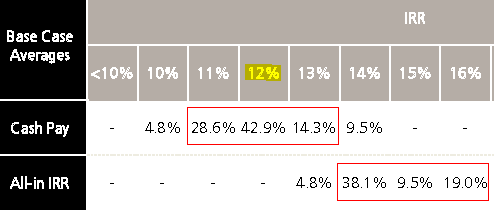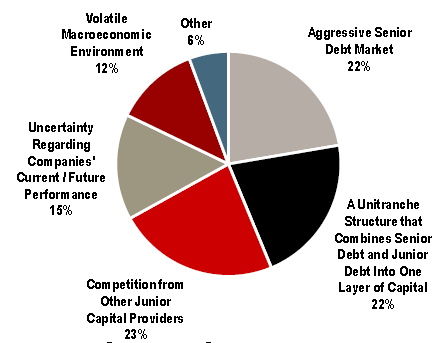The cost of debt capital for many smaller firms continues to be quite high. While banks, BDCs, CLOs, etc. provide inexpensive senior financing to larger firms, the lower part of the middle market tends to have limited access to such funding. To obtain longer term capital, these firms often take out mezzanine debt (junior capital), which remains expensive. In fact that is how many BDCs juice up their dividends (see post). A large portion of this financing is still provided by the numerous mezz funds (private debt funds) including government backed small business lenders (see post).
The latest survey from Key Bank shows that mezzanine debt still carries 11-13% cash coupon in addition to 2% PIK (payment in kind - a form of deferred interest). While fewer lenders also get warrants (equity options that are part of the debt financing), the all-in expected IRR (effective return) on mezz financing ranges from 14% to 16% (with a few players targeting even higher numbers.) While this is an expensive form of capital, many smaller firms view it being cheaper than equity capital, which would force them to give up a big part of their firm to private equity investors.
 |
| Mezz IRR expectations; Source: KeyBanc Capital Markets (white rows indicate % of respondents that fall into this category) |
But as capital continues to chase yield products, competition from various capital providers is heating up. Here is what mezzanine lenders are most concerned about in their markets. The competition is coming from other mezz providers, more aggressive senior lenders, and those lending via the so-called "unitranche" - a combination of senior and junior debt in one loan deal.
 |
| Source: KeyBanc Capital Markets |
SoberLook.comFrom our sponsor:












